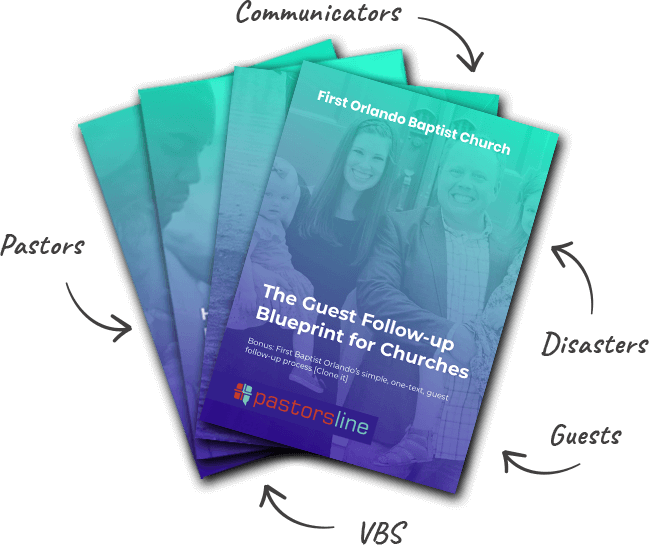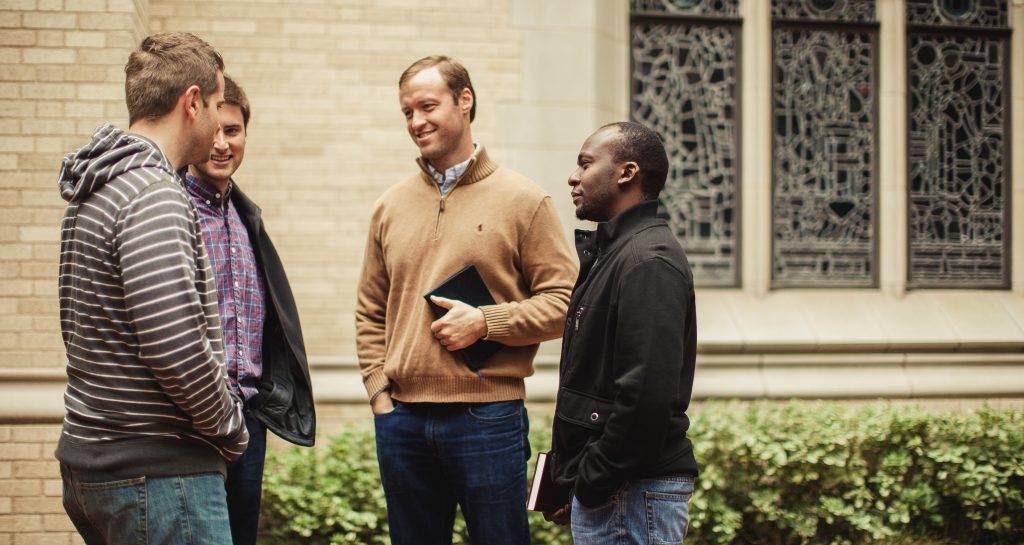
UPDATE (January 19, 2023)...Since this blog was written, the A2P 10DLC system number protocol came into being in the U.S. Briefly, this protocol is a way to register 10-digit long codes in order to keep spam to a minimum. This article has been updated to reflect that change. Read on to find out more about long codes and short codes.
Just in case you are new to all this…
The phrase “text marketing” (or as we called it “text ministry”) is a way you can communicate via text in mass using a cloud-based system or can capture data from your members and visitors via their cell phones. After rolling out a text digital strategy for your ministry, the number your members and visitors use to receive your text messages (sent by service providers) can either be “shortcodes” (4-6 digit numbers) or “long codes” (10-digit, local numbers, i.e., a “regular” telephone number).
Why use one or the other?
Advantages of using shortcodes
1. Easier to remember
Shortcodes (being shorter) seem easier to say, remember, and may encourage your members or visitors to take action to a greater extent. This is more important when engaging with visitors or people who haven’t yet seen or will repeatedly see your campaign. So, telling someone to text WELCOME to 77411 may be more effective than telling someone to text WELCOME to (844) 285-1815.
This is especially relevant for large, opt-in campaigns. In an opt-in campaign, the person texts a special trigger word (called a “keyword”) in order to be added to your list. If this is being done in front of a live audience, a short code may be the better option for a speedy delivery.
If you are a large organization sending hundreds or thousands of messages at once, this is still your fastest option. So, if you can afford it and want complete control, you can buy your own shortcode. Yet, it is expensive (see Drawback #1 below).
2. Faster sending rate
Another reason a short code is ideal for mass messaging is because you send the messages faster. With PastorsLine, you can process up to 100 SMS/second with a shortcode in theory as opposed to 4–75 SMS/sec with local numbers.
3. Avoid carrier filtering
Using a short code is still a great way to significantly reduce carrier filtering. However, it is not the only or even best way.
All of PastorsLine’s numbers are successfully registered with the A2P 10DLC number protocol. This means that they are ‘trusted’ numbers, known to the mobile carriers, and should not be filtered as spam.
Drawbacks in using shortcodes
1. Costs
Buying a shortcode is likely not economical for most churches. A shortcode usually leases at $12-$20,000/year and requires a 2-3 month approval process. Also, you would need to ensure your campaigns are compliant to avoid being fined thousands of dollars and likely need to spend additional costs to have a developer make the shortcode work for your specific campaign. That’s why companies like PastorsLine lease a short code and share the costs by having clients “sublease” the trigger words (keywords) for their use. (More about keywords below.)
2. Keyword challenge
A “keyword” is a special word you set up in an app (like PastorsLine) to trigger different actions. You ask people to text that keyword to a number (shortcode or long code) to opt in to a campaign or data capture.
Here is an example:
Church One tells its first-time guests to text “WELCOME” to the PastorsLine shortcode [77411] to get more information about the church.
In the example above, “WELCOME” is a keyword. Texting “WELCOME” could trigger our system to send an autoreply with more information. Another case is that our system would ask the subscriber (texter) for more details like their name.
The drawback with shortcodes is if one church uses or reserves the keyword WELCOME for that specific short code, in this case, 77411, then no other church can use that same keyword with that same shortcode as the shortcode would not be unique. To mitigate this issue, PastorsLine has organized a system of free and premium keywords for use with our shortcode. Find out more here.
3. Spammy, non-person feel
When most people see these “weird” and “spammy-looking” 4-6 digit numbers, they immediately either think that it’s an alert from their bank or some spam marketing campaign. Maybe they are thinking about a text verification process to log into an account. It doesn’t always inspire trust in the person with whom you want to engage. As technology ages, this becomes less of a problem over time, but it might still cause hesitation from some of your people.
If you want to engage with guests on a more personal level, a shortcode alone may not do it. They could think it’s coming from a system and not a person. Something to think about. In PastorsLine, we don’t recommend using the shortcode for regular, 1 on 1 communication, but we have some logic to handle this use case should it be necessary.
4. Turned off by some phones
Some mobile phone accounts have the shortcode messaging ability turned off. This means they will most likely have problems receiving and responding to short code messages. The user would need to be in touch with their service provider to enable shortcode messaging on their device.
In addition, some wireless carriers (service providers) do not support short code messaging. So even if the device is shortcode enabled and the shortcode is correct, messages will not get through.
Advantages of using local 10-digit numbers (long codes)
Please keep in mind…as we mentioned earlier…This article has been updated to reflect that change.
1. Cost
$5 – $50/number per year. The registration period is short, so your number is usually available within a few days. Short code registration takes more time–up to a few weeks. You can add multiple numbers for different users without breaking the back of the church finances. Also, you are able to pick from various numbers. You can even use toll-free numbers or vanity numbers.
2. No keyword issue
The huge advantage when using a 10-digit number for an opt-in is that you would have virtually unlimited keywords per number. Since your number is unique (i.e., set per account), multiple churches can use the same keyword (such as WELCOME) without any issue.
3. Personal and non-spammy
Long codes are regular phone numbers with local area codes—hence, more familiar and more human. Since the long codes look more familiar, people are less hesitant about using them, in general. It feels like one on one engagement; basically, your cell phone in the cloud. This is huge. They likely will engage.
As it’s a phone number, people feel that there is a “human at the other end” and are encouraged to communicate. Also, people feel that long codes rarely send spam.
Though we understand why the instruction: “Text WELCOME to 77411” seems more likely to motivate the subscriber to take action, you should not underestimate the familiarity of local, 10-digit numbers, and the length of the number isn’t a huge barrier in most cases.
4. Not blocked for 1 on 1
Shortcodes can be turned off by some phone accounts by default. Local numbers are not.
5. Voice
Can do robocalls or 1 on 1 call. So you can use the same number for text and calling.
Drawbacks in using local, 10-digit numbers (long codes)
1. Opt-in for large campaigns
When asking people to opt-in via a keyword (for example: Text ‘Welcome’ to 12345), short codes are much friendlier. Having just 4-6 digits, the short code is easier to remember. This is especially true if your campaign is focusing on people who do not have your church number in their contacts.
2. Sending speed can be much slower
At the moment, the MPS (messages per second) speed of a short code is 100 messages per second by default. Under the A2P system, the MPS of your long code depends on your trust score, your use case, and the mobile carrier you are using. Currently, the MPS of long codes ranges from 4–75 texts per second. So, if you are sending to hundreds or thousands of people, it could take a long time.
So which do you choose?
Short answer is both. Pick a company that offers both options as each option works better in specific situations your church would run into. A company like PastorsLine has leased the shortcode 77411 and offers local numbers as well.
Recap Table
| Long codes (10-digit numbers) | Short codes | |
|---|---|---|
|
Costs |
Cheaper $5–$50/number/yr Not a large investment
|
More expensive $12k – $20k per short code per year Our workaround: We lease it for you, so you can use what you need at a fraction of the cost. |
|
Personal Engagement / Appeal / Responsiveness |
Feels very personal (your cellphone in the cloud) and non-spammy. Encourages high engagement. While more digits to remember, device memory makes that less of an issue. |
The short code reputation gives a “spammy”, non-person feel. Could cause engagement hesitation. Only a few digits make it easier to remember and type in.
|
|
Keyword Challenge |
Unique numbers allow virtually unlimited long code keywords, i.e., more than one church can use the same long code keyword. |
A shared number requires unique short code keywords, i.e., only one church can use the same short code keyword. |
|
Opt-in (incoming) |
Can work for ongoing campaigns, e.g. on a poster or flyer; or used with a very small group. |
Ideal for mass data capture at the same time such as a captive audience at a stadium or church or during live streaming. |
|
Deliverability, filtering (outgoing) |
Better for 1 on 1 communication since less likely to be blocked by carriers or the mobile subscribers themselves. Usually subject to intense carrier filtering. So, this option is good for small-medium organizations/campaigns. |
Ideal for mass data capture at the same time such as a captive audience at a stadium or church or during live streaming. |
|
Speed |
4–75 texts per second. Depends on trust score, use case, and mobile carrier. So, problematic when sending messages to over 500 people. |
100 messages per second by default. So, able to send larger quantities of texts more quickly. |
|
Voice |
One number can do both text and calling. |
Will need the short code for texting AND a long code for voice. |
The best way to explore is by doing, right?
I agree, take me to the free, $0 for 30 days trial.
We’re not ready yet, but I’d like to know more about texting in churches.



